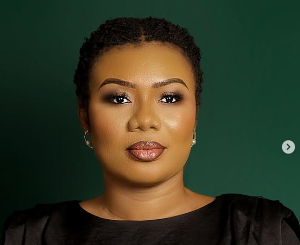When Mark Simpson coined the term ‘Metrosexual’ twenty years ago, the world was not as ‘interesting’ and vain as it is today. The internet was not common. There was nothing like social media. Well, there may well have been other forms of media platforms in the advanced world that brought people together for certain vain purposes, but there was no Facebook and Twitter and Instagram. Today, with 550 Million members, Twitter is proud to proclaim that “suddenly all the world is a twitter.” There are 1.15 Billion of us on Facebook, and other platforms have good numbers of devotees who have maintained a presence in the virtual world to gratify the social ego.
In the 1994 article that Simpson wrote in the Independent, he defined the Metrosexual man as “the single young man with a high disposable income, living or working in the city (because that’s where all the best shops are), is perhaps the most promising consumer market of the decade. In the Eighties he was only to be found inside fashion magazines such as GQ. In the Nineties, he’s everywhere and he’s going shopping.” The term was derived from a combination of the words ‘metropolitan’ and ‘heterosexual’, to contrast heterosexuals whose lifestyles were closer to that of homosexuals. Typically, the metrosexual has an urban, post-industrialist and capitalist outlook to life, and is very particular about his grooming, smell and appearance.
Salon.com offered a more appropriate definition of the phenomenon in 2002: “The typical metrosexual is a young man with money to spend, living in or within easy reach of a metropolis — because that’s where all the best shops, clubs, gyms and hairdressers are. He might be officially gay, straight or bisexual, but this is utterly immaterial because he has clearly taken himself as his own love object and pleasure as his sexual preference.” English football icon David Beckham was the best example of the idea.
Fast forward to 2014, where our lives are virtually ruled by fashion and gadgets, and the metrosexual is very much a normal guy next door. He is no more a head turner or a ‘fashion spectacle’ as one of Ghana’s entertainment generalissimo, Kwasi Kyei Darkwa (KKD) used to be. Today, there is another breed of fashion-crazy men identified as the spornosexual. These are guys who follow fashion and body image as a religion, going the unthinkable extent to use products, objects and pleasures typically associated with women or homosexuals. Metrosexuals used to wear thongs to the beaches, and we thought that was so odd. Well the spornosexual wears the half-thong, (a mankini hybrid), displaying well-toned bodies and six packs, with various kinds of hair styles.
In the West, you see a lot of things. Women and men have a ‘liberated’ sense of fashion. The things we see in the magazines are mostly practiced, even though Lady Gaga’s is taking liberation a little too far. In Ghana, too, you see lots of strange things these days. We may not have the spornosexals here yet, but we do have metrosexuals in this country, or at least the trend is catching on pretty fast. We usually identify them with a few adjectives: nice guy, cute guy, handsome paddy, smart guy, or the more colloquial ‘shoto man’, for a man who dresses to impress. They throng the gyms and barbering shops to keep body and hair together. They don’t seem to care much about their souls, except when they decide to once in a long while ‘show up’ in church.
When we were growing up, we never saw men in hairdressing salons. Beauty and cosmetic shops were for women alone. We never imagined a man sitting in a beauty shop receiving pedicure and manicure treatment. The Ghanaian metrosexual cares more about his nails and body creams than what the IMF is saying about our borrowing potential, or what the newspapers are saying about the effects of globalization and the new world order. They need to keep in shape and maintain a great form. They are narcissuses who, like the spornosexuals, do not mind sidestepping the bounds of modesty to make a bold fashion statement or register a certain impression.
What happened to ‘kojo besia’, boys or men whose physical appearance or preference for things reminded us of women? The Kojo who has a female appearance (besia) is the cute one, especially if he is also able to match it with trendy clothes. Men and women have pretty much blended in quite well these days. We share the same body accessories, hand bands and body creams to maintain an appealing and fresh body. It sits well with our idea of modernity and cosmopolitanism in the 21st century.
In Ghana, the metrosexual fever has infected the church, prescribing a charismatic fashion trend for the smart, dressy churchgoer. You would encounter expensive designer wears in modern charismatic churches than in a banking hall or betting shop. You may confuse a religious environment for a place of freethinkers if you are not quick to spot the pulpit or the offering bowl. The days where the poor in spirit were those who were blessed of the Lord have given way to better days where the trendy-looking Christian appears to be a more convincing representation of God’s glory.
Our films and television shows have very much embraced the metrosexual craze, bringing Hollywood and Sex and the City closer to our living rooms. Sex is not such a big deal these days among many young people. We read about one-night stands, pre-nuptial agreements and expensive divorce settlements among people of other cultures. Well, these may soon be our culture too if we do not check the influence of triumphant American capitalism and other ‘rich’ cultures. It has often been asked whether there is anything like the quintessential Ghanaian culture when we are proud to flaunt our appetite for things that previously belonged to other people. God help us.
Kwesi Tawiah-Benjamin
bigfrontiers@gmail.com
\
Opinions of Sunday, 22 June 2014
Columnist: Tawiah-Benjamin, Kwesi














